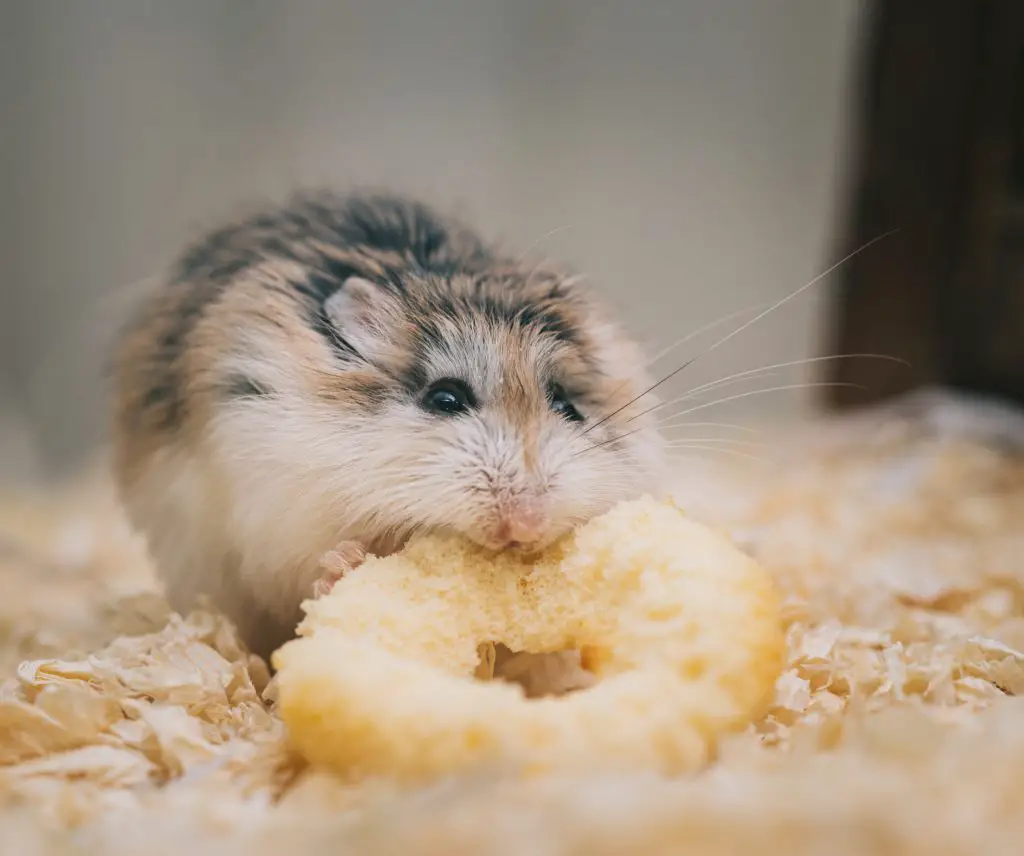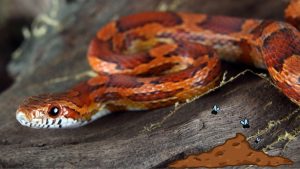Hamsters are beloved pocket pets known for their cuteness, small size, and relatively easy care. With proper socialization and gentle handling, hamsters can even display affectionate behavior. However, like any pet, it’s essential to provide them with the right diet to ensure their health and well-being. Feeding your hamster a nourishing and balanced diet throughout their life stages is crucial. Let’s explore the different types of hamster food and additional information to enhance their diet.
In the wild, hamsters are omnivores, meaning they consume both plant materials and occasional insects for protein. They have the instinct to gather and store food in their cheek pouches to bring back to their burrows. Even in the safety of a cage, it’s adorable to witness your pet hamster with their cheeks stuffed full.
A pet hamster’s diet can include a mix of pellets, seed blends, fresh foods, and occasional treats. The majority of their diet should consist of high-quality, store-bought hamster food specifically formulated for hamsters (not for rats, mice, or cats). However, choosing the right food at the pet store can be overwhelming, and it doesn’t end there. When offering fresh foods and treats, it’s important to make informed choices.
Pelleted Hamster Foods
One convenient way to feed your hamster is through pelleted foods. Pellets offer a balanced diet in every bite and are often recommended. They come in various shapes, resembling small biscuits, cookies, or cereal. Hamsters enjoy chewing on pellets, and they prevent selective eating, which can be an issue with seed mixes. However, an entirely pellet-based diet may become monotonous, and some hamsters may eventually refuse them.
To prevent this, use pellets as the primary base of your hamster’s food and supplement with other tasty foods. Always read the package for feeding directions, but as a general guideline, offer a few tablespoons of pellets to your hamster each day.
Seeds for Hamsters
Hamsters love seed mixes but tend to pick out their favorites and may reject the rest. To address this, it’s best to feed your hamster a diet that combines pellets and loose seeds or choose a seed blend that includes pellets. A good hamster seed mix should contain a variety of grains, seeds, and dried vegetables or fruits. It should also have added vitamins and minerals.
When offering a loose seed mix, make sure your hamster finishes the food before adding more, preventing selective eating and nutritional imbalances. Ensure that the seed mix is formulated specifically for hamsters and not for other rodents or birds.
Follow the guidelines on the package, but as a general rule, offer around 1/8-cup of seed mix to your hamster each day.
Fresh Foods for Hamsters
Hamsters enjoy fresh vegetables and fruits as part of their diet. Roughly 20% of their diet should consist of fresh foods, while pellets and seeds make up about 75%. Treats should only comprise about 5% of their overall food intake.
Offer small pieces of fresh, clean produce to your hamster each day. Wash the food before offering it and remove any uneaten portions by the end of the day to prevent spoilage.
Some recommended fresh foods include kale, dandelion greens, romaine lettuce, Swiss chard, and raw spinach. Fresh fruits can be offered a few times a week, but be cautious with the sweet ones to avoid weight gain. Apples, bananas, berries, grapes, and melons make excellent additions to your hamster’s diet. However, citrus fruits should be avoided.
Include a small “salad” of fresh vegetables each day, such as carrots, broccoli, cauliflower, cucumber, peas, squash, and cooked potatoes (other vegetables should be given raw).
Grains, Nuts, and Protein
While pellets, seeds, and fresh produce should form the bulk of your hamster’s diet, it’s beneficial to offer small portions of other foods occasionally. This provides a more varied diet closer to what hamsters would eat in the wild and helps prevent boredom.
Hamsters enjoy whole grains in the form of bits of whole-grain toast, whole-grain cereals, cooked pasta, and cooked rice. Avoid sugary cereals or bread with added sugar.
Nuts are also appreciated by hamsters, but they should be given sparingly, no more than once a week. Offer only unsalted nuts like peanuts, cashews, and walnuts. Avoid almonds, as they are not suitable for hamsters.
Hamsters may love peanut butter, but it should be given carefully (like any sticky food) to prevent it from getting stuck in their cheek pouches. A thin layer on a piece of wood can be an occasional treat, but choose peanut butter without added salt and sugar.
Protein is essential in a hamster’s diet, and they enjoy non-plant-based protein sources on occasion. Offer small bites of scrambled or hard-boiled eggs, dried mealworms or crickets, or plain, cooked chicken or turkey as treats.
Foods to Avoid
Certain foods should never be given to hamsters as they can be harmful to their health. Avoid feeding them apple seeds, raw beans, raw potatoes, almonds, citrus fruits, garlic, onions, rhubarb leaves, raw rhubarb, chocolate, sugary or salty foods, junk food, and red meat.
The Best Hamster Diet
The ideal hamster diet consists of a pelleted food as the base, supplemented with seed blends, fresh fruits and vegetables, grains, nuts, and occasional protein treats. With this balanced diet, there is no need for additional commercial treats as the variety of foods mentioned above provides enough variety and occasional treats for your hamster. Ensure your hamster always has access to fresh, clean water.
By following this feeding guide, you can ensure your hamster’s nutritional needs are met, promoting their overall health and well-being.
We would always encourage you to speak with your veterinarian and/or local pet store before feeding your hamster any foods that they have not been exposed to before.
Author
-

Lawrence, the founder of Pet Ploy, established the website in mid-2023. With a lifelong love for pets, Lawrence has been surrounded by a variety of animals since his early years. From dogs and cats to guinea pigs, rabbits, fish, and more, he has experienced the joy of caring for a diverse range of pets. Drawing from his deep-rooted passion, Lawrence created Pet Ploy to share his knowledge and enthusiasm with fellow pet enthusiasts. Through the platform, he aims to provide valuable insights, tips, and resources to promote the well-being and happiness of pets everywhere.











